Themed collection 2017 Catalysis Science & Technology HOT Articles

Practices for the collection and reporting of electrocatalytic performance and mechanistic information for the CO2 reduction reaction
This work discusses how to best perform experiments and report data for the electrochemical reduction of carbon dioxide.
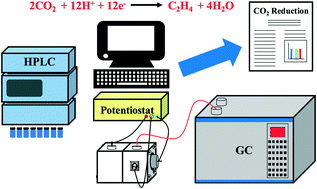
Catal. Sci. Technol., 2017,7, 5820-5832
https://doi.org/10.1039/C7CY01785E
Grand challenges for catalysis in the Science and Technology Roadmap on Catalysis for Europe: moving ahead for a sustainable future
This perspective discusses the general concepts that will guide future catalysis and related grand challenges based on the Science and Technology Roadmap on Catalysis for Europe prepared by the European Cluster on Catalysis.
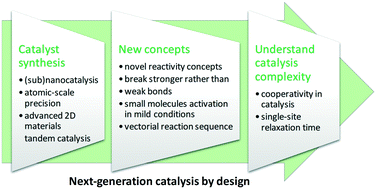
Catal. Sci. Technol., 2017,7, 5182-5194
https://doi.org/10.1039/C7CY01067B
Forty years of temporal analysis of products
A detailed understanding of reaction mechanisms and kinetics is required in order to develop and optimize catalysts and catalytic processes. Temporal analysis of products (TAP) is an instrument capable of providing such understanding.

Catal. Sci. Technol., 2017,7, 2416-2439
https://doi.org/10.1039/C7CY00678K
Transition metal–phosphorus-based materials for electrocatalytic energy conversion reactions
This review illustrates the recent developments of transition metal–phosphorus-based materials for electrocatalytic energy conversion reactions.
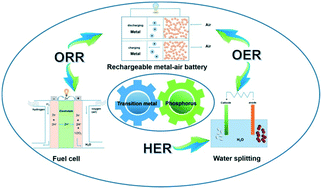
Catal. Sci. Technol., 2017,7, 330-347
https://doi.org/10.1039/C6CY01719C
Challenges and breakthroughs in post-combustion catalysis: how to match future stringent regulations
This short overview briefly summarizes the prominent evolutions and scientific breakthroughs in the development of end-of-pipe technologies with respect to the standard regulations of atmospheric pollutant emissions from automotive exhaust.

Catal. Sci. Technol., 2017,7, 5195-5211
https://doi.org/10.1039/C7CY00983F
Metal–organic frameworks (MOFs) for photocatalytic CO2 reduction
This review summarized the recent progress, limitations and challenges in using MOFs for photocatalytic CO2 reduction, a green and sustainable strategy for CO2 utilization.
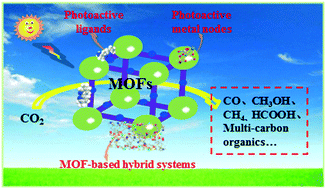
Catal. Sci. Technol., 2017,7, 4893-4904
https://doi.org/10.1039/C7CY01653K
Ménage-à-trois: single-atom catalysis, mass spectrometry, and computational chemistry
Genuine, single-atom catalysis can be realized in the gas phase and probed by mass spectrometry combined with computational chemistry.
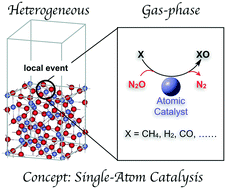
Catal. Sci. Technol., 2017,7, 4302-4314
https://doi.org/10.1039/C6CY02658C
Combining additive manufacturing and catalysis: a review
A review on additive manufacturing (AM) applied to heterogeneous catalysis reveals enabling power of AM and challenges to overcome in chemical interfacing and material printability.
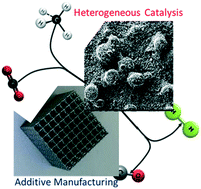
Catal. Sci. Technol., 2017,7, 3421-3439
https://doi.org/10.1039/C7CY00615B
Iron-catalyzed dehydrogenation reactions and their applications in sustainable energy and catalysis
This review article describes recent developments of iron-based acceptorless dehydrogenation (AD) reactions of fundamentally important feedstock, as a route to sustainable chemical synthesis and energy storage applications.
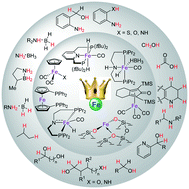
Catal. Sci. Technol., 2017,7, 3177-3195
https://doi.org/10.1039/C7CY00879A
Minireview: direct catalytic conversion of sour natural gas (CH4 + H2S + CO2) components to high value chemicals and fuels
Direct sour natural gas catalytic conversion allows to obtain high value products, such as hydrocarbon and organosulfur chemicals, fuels and fertilizers.
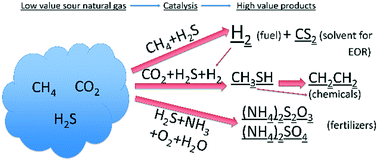
Catal. Sci. Technol., 2017,7, 2919-2929
https://doi.org/10.1039/C7CY00272F
Organocatalyzed coupling of carbon dioxide with epoxides for the synthesis of cyclic carbonates: catalyst design and mechanistic studies
The coupling of carbon dioxide (CO2) with epoxides with the formation of cyclic carbonates is a highly attractive 100% atom economic reaction. It represents a greener and safer alternative to the conventional synthesis of cyclic carbonates from diols and toxic phosgene.
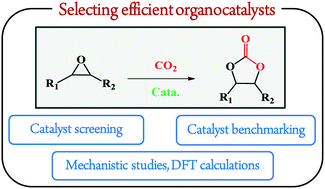
Catal. Sci. Technol., 2017,7, 2651-2684
https://doi.org/10.1039/C7CY00438A
Catalytic application of layered double hydroxide-derived catalysts for the conversion of biomass-derived molecules
Layered double hydroxide and its derived metal oxides in the transformations of biomass-derived molecules.
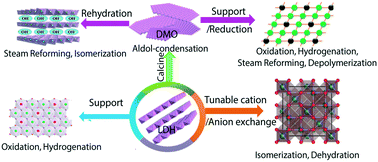
Catal. Sci. Technol., 2017,7, 1622-1645
https://doi.org/10.1039/C7CY00274B
Aluminium fluoride – the strongest solid Lewis acid: structure and reactivity
Highly Lewis acidic aluminium fluorides are interesting heterogeneous catalysts for many reactions, especially C–H and C–F bonds can be activated at room temperature.
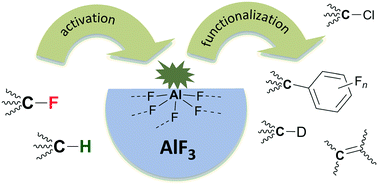
Catal. Sci. Technol., 2017,7, 773-796
https://doi.org/10.1039/C6CY02369J
Upgrading of oxygenated compounds present in aqueous biomass-derived feedstocks over NbOx-based catalysts
Oxygenated organic compounds in biorefinery aqueous effluents are transformed into a mixture of hydrocarbon fuel precursors by using a Nb oxide catalyst.
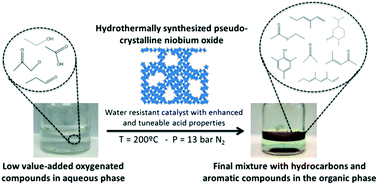
Catal. Sci. Technol., 2017,7, 5495-5499
https://doi.org/10.1039/C7CY00916J
One-pot Suzuki–Heck relay to prepare industrially valuable intermediates using the Pd–Cy*Phine catalyst system
A rare example of a one-pot, palladium-catalyzed Suzuki–Heck sequence has been developed with applicability to APIs and organoelectronic materials.
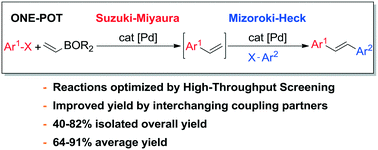
Catal. Sci. Technol., 2017,7, 4599-4603
https://doi.org/10.1039/C7CY01344B
Nitrile hydroboration reactions catalysed by simple nickel salts, bis(acetylacetonato)nickel(II) and its derivatives
Simple nickel salts, bis(acetylacetonato)nickel(II) and its derivatives, catalyzed the hydroboration reactions of aryl and alkyl nitriles with catechol borane.
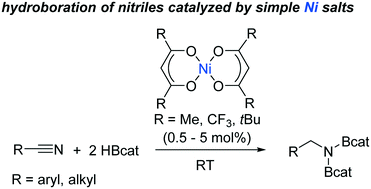
Catal. Sci. Technol., 2017,7, 3196-3199
https://doi.org/10.1039/C7CY00944E
Tandem catalytic synthesis of benzene from CO2 and H2
Benzene was synthesized from CO2 and H2 by a tandem catalysis reaction comprising CO2 methanation and CH4 aromatization.
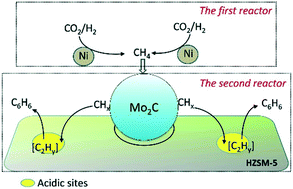
Catal. Sci. Technol., 2017,7, 2695-2699
https://doi.org/10.1039/C7CY00842B
Establishing a discrete Ising model for zeolite deactivation: inspiration from the game of Go
A discrete model for zeolite deactivation is built considering cage connectivity, in the inspiration of the game of Go.

Catal. Sci. Technol., 2017,7, 2440-2444
https://doi.org/10.1039/C7CY00331E
Efficient carbon-supported heterogeneous molybdenum-dioxo catalyst for chemoselective reductive carbonyl coupling
Selective carbonyl coupling, high symmetric ether selectivity.
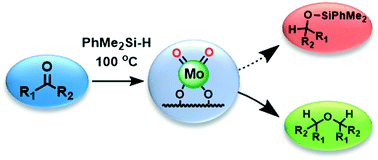
Catal. Sci. Technol., 2017,7, 2165-2169
https://doi.org/10.1039/C7CY00336F
Impact of minor amounts of hydroperoxides on rhodium-catalyzed hydroformylation of long-chain olefins
The influence of varying hydroperoxide concentrations in olefin feeds was systematically investigated in rhodium-catalyzed hydroformylation using a diphosphite ligand.

Catal. Sci. Technol., 2017,7, 1465-1469
https://doi.org/10.1039/C7CY00244K
Improving the catalytic efficiency of carbon-based active sites by trace oxide promoters for highly productive olefin synthesis
The catalytic ODH activation energy on CNTs significantly decreased by the introduction of metal oxides. The propane turn-over efficiency of each original carbon-based active site consequently increased exponentially.
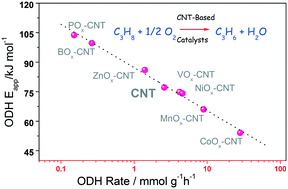
Catal. Sci. Technol., 2017,7, 802-806
https://doi.org/10.1039/C6CY02562E
Palladium-catalyzed dehydrogenation of dihydro-heterocycles using isoprene as the hydrogen acceptor without oxidants
An efficient and general method for Pd-catalyzed dehydrogenative aromatization of dihydro-heteroatom compounds without external O2 and H2 is first described.
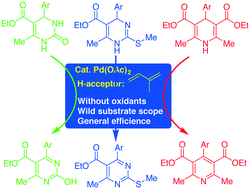
Catal. Sci. Technol., 2017,7, 565-569
https://doi.org/10.1039/C6CY02038K
Engineering of D-fructose-6-phosphate aldolase A for improved activity towards cinnamaldehyde
D-Fructose-6-phosphate aldolase A (FSAA) from Escherichia coli was engineered for enhanced catalytic efficiency towards cinnamaldehyde.
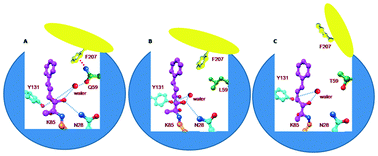
Catal. Sci. Technol., 2017,7, 382-386
https://doi.org/10.1039/C6CY01622G
Is iron nitride or carbide highly active for oxygen reduction reaction in acidic medium?
The high ORR activities in acidic medium for the so-called Fe2N- and Fe3C-based catalysts actually originate from the trace of Fe–Nx/C moieties (x ≥ 4) rather than the Fe2N or Fe3C phases themselves.
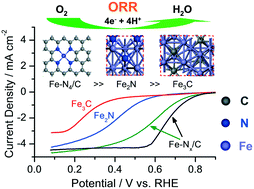
Catal. Sci. Technol., 2017,7, 51-55
https://doi.org/10.1039/C6CY01921H
Investigation of methanol conversion over high-Si beta zeolites and the reaction mechanism of their high propene selectivity
Large pore high-Si beta zeolites (Si/Al = 136 to 340) were synthesized by a HF-assisted method, and their catalytic performance for the conversion of methanol to propene was explored.
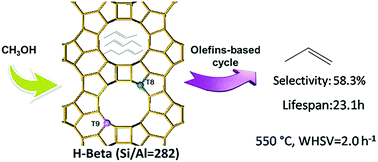
Catal. Sci. Technol., 2017,7, 5882-5892
https://doi.org/10.1039/C7CY01804E
Identification of activity trends for CO oxidation on supported transition-metal single-atom catalysts
Identification of activity trends for CO oxidation on transition-metal single-atom catalysts by using Ead(CO) and Ead(O2) as descriptors.
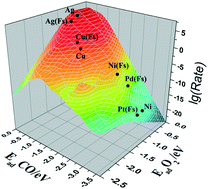
Catal. Sci. Technol., 2017,7, 5860-5871
https://doi.org/10.1039/C7CY00464H
Direct hydroxylation of benzene and aromatics with H2O2 catalyzed by a self-assembled iron complex: evidence for a metal-based mechanism
An imine-based catalyst easily obtained by self-assembly of cheap and commercially available starting materials selectively catalyzes the hydroxylation of aromatic compounds.
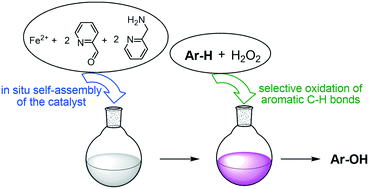
Catal. Sci. Technol., 2017,7, 5677-5686
https://doi.org/10.1039/C7CY01895A
Elucidating the role of oxygen coverage in CO2 reduction on Mo2C
Revealed linear relationships between oxygen coverage and electronic modification of the Mo2C catalyst that tunes the reactivity for CO2 reduction.
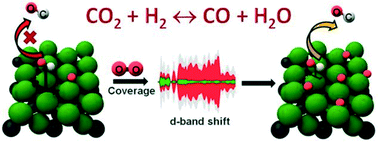
Catal. Sci. Technol., 2017,7, 5521-5529
https://doi.org/10.1039/C7CY01810J
In situ investigation on Co-phase evolution and its performance for Fischer–Tropsch synthesis over Nb-promoted cobalt catalysts
The influences of Nb on the Co-phase evolution, reducibility, chemisorption, and Fischer–Tropsch synthesis performance of catalysts were in situ researched.
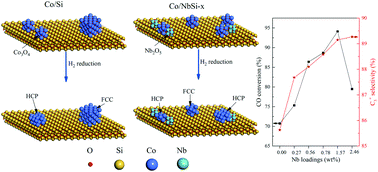
Catal. Sci. Technol., 2017,7, 5530-5539
https://doi.org/10.1039/C7CY01325F
Influence of Re–M interactions in Re–M/C bimetallic catalysts prepared by a microwave-assisted thermolytic method on aqueous-phase hydrogenation of succinic acid
Re–M/C catalysts were simply synthesized and a kinetic study was performed to provide insight into the effect of Re–M interactions.
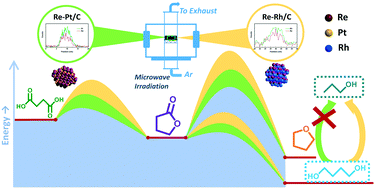
Catal. Sci. Technol., 2017,7, 5212-5223
https://doi.org/10.1039/C7CY01039G
Ab initio coverage-dependent microkinetic modeling of benzene hydrogenation on Pd(111)
Coverage-dependent calculations are required for an accurate DFT-based prediction of the activity and a correct mechanistic understanding of catalytic hydrogenation.
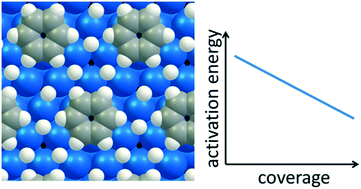
Catal. Sci. Technol., 2017,7, 5267-5283
https://doi.org/10.1039/C7CY00962C
Imaging and chemically probing catalytic processes using field emission techniques: a study of NO hydrogenation on Pd and Pd–Au catalysts
Nitric oxide hydrogenation is investigated on palladium and gold–palladium alloy crystallites, i.e. the extremity of sharp tip samples aimed at modelling a single catalytic grain.
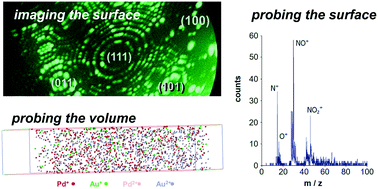
Catal. Sci. Technol., 2017,7, 5249-5256
https://doi.org/10.1039/C7CY00994A
Reactivity of methanol over copper supported on well-shaped CeO2: a TPD-DRIFTS study
Methoxy and formate species resulting from methanol adsorption on Cu supported on well-shaped CeO2 are morphology-dependent.
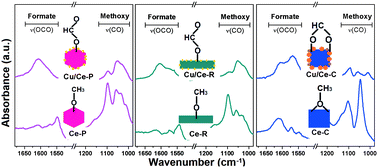
Catal. Sci. Technol., 2017,7, 5224-5235
https://doi.org/10.1039/C7CY00984D
Participation of interfacial hydroxyl groups in the water-gas shift reaction over Au/MgO catalysts
OH at 3750 cm−1 reacts with CO only in the presence of Au, indicating the importance of the Au/MgO interface.
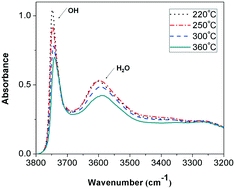
Catal. Sci. Technol., 2017,7, 5257-5266
https://doi.org/10.1039/C7CY01020F
Development of basicity in mesoporous silicas and metallosilicates
We report herein an experimental study on the development of basicity on mesoporous silicas and metallosilicates (Nb- and Ce-) on SBA-15 and MCF porous structures.
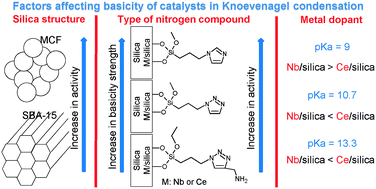
Catal. Sci. Technol., 2017,7, 5236-5248
https://doi.org/10.1039/C7CY00927E
Computational exploration of ligand effects in copper-catalyzed boracarboxylation of styrene with CO2
CO2 insertion is promoted by copper catalysts with more electron-rich monophosphine or less sterically hindered NHC ligands.
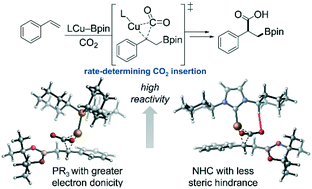
Catal. Sci. Technol., 2017,7, 5049-5054
https://doi.org/10.1039/C7CY01637A
Efficient chromium-based catalysts for ethylene tri-/tetramerization switched by silicon-bridged/N,P-based ancillary ligands: a structural, catalytic and DFT study
High performance catalysts switched by a series of silicon-bridged/N,P-based ancillary ligands have been explored.
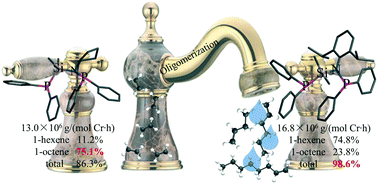
Catal. Sci. Technol., 2017,7, 5011-5018
https://doi.org/10.1039/C7CY01561E
Tuning the confinement space of N-carbon shell-coated ruthenium nanoparticles: highly efficient electrocatalysts for hydrogen evolution reaction
Development of efficient and durable catalysts for the hydrogen evolution reaction (HER) in an alkaline system is vital for the transformation of renewable energy into hydrogen fuel.
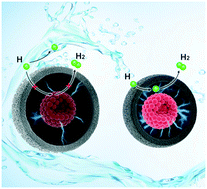
Catal. Sci. Technol., 2017,7, 4964-4970
https://doi.org/10.1039/C7CY01539A
Selective oxidation of propene to acrolein on FeMoTeO catalysts: determination of active phase and enhancement of catalytic activity and stability
Multicomponent FeMoTeO catalysts have been synthesized and studied for mild propene oxidation to acrolein.
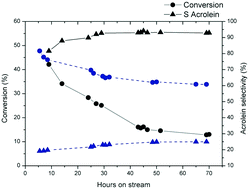
Catal. Sci. Technol., 2017,7, 4629-4639
https://doi.org/10.1039/C7CY01574G
Rational design of Fe catalysts for olefin aziridination through DFT-based mechanistic analysis
Experimental and DFT-based mechanistic studies are used to optimise Fe catalysts for aziridination.
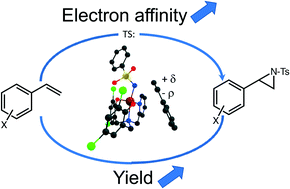
Catal. Sci. Technol., 2017,7, 4388-4400
https://doi.org/10.1039/C7CY01283G
Synthesis and activation for catalysis of Fe-SAPO-34 prepared using iron polyamine complexes as structure directing agents
Fe-SAPO-34 templated with Fe2+–polyamine complexes gives Fe3+ species upon calcination that are active for selective catalytic reduction of NOx with ammonia.
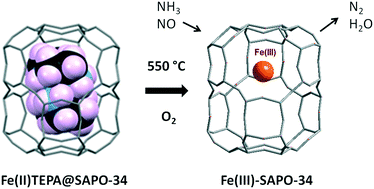
Catal. Sci. Technol., 2017,7, 4366-4374
https://doi.org/10.1039/C7CY01269A
Computer-aided rational design of Fe(III)-catalysts for the selective formation of cyclic carbonates from CO2 and internal epoxides
The mechanism of Fe-catalyzed cyclic carbonate formation of CO2 and internal epoxides was studied to identify design strategies for more efficient catalysts.
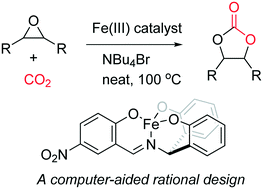
Catal. Sci. Technol., 2017,7, 4375-4387
https://doi.org/10.1039/C7CY01435J
Connection between macroscopic kinetic measurables and the degree of rate control
Macroscopic kinetic measurables are linked to elementary reaction steps by the degree of rate control.
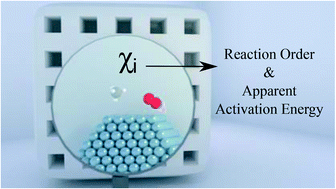
Catal. Sci. Technol., 2017,7, 4034-4040
https://doi.org/10.1039/C7CY01246B
Out-of-plane FeII–N4 moiety modified Fe–N co-doped porous carbons as high-performance electrocatalysts for the oxygen reduction reaction
A Fe–N–C electrocatalyst with active FeII–N4 sites was synthesized exhibiting superior oxygen reduction performance in both alkaline and acidic electrolytes.
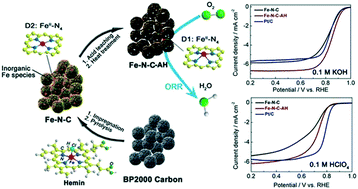
Catal. Sci. Technol., 2017,7, 4017-4023
https://doi.org/10.1039/C7CY01290J
Theoretical understanding on the selectivity of acrolein hydrogenation over silver surfaces: the non-Horiuti–Polanyi mechanism is the key
The significance of the non-Horiuti–Polanyi mechanism in understanding heterogeneous catalytic hydrogenation reactions is highlighted.
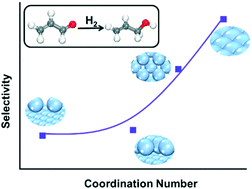
Catal. Sci. Technol., 2017,7, 4024-4033
https://doi.org/10.1039/C7CY01500C
Water as a catalytic switch in the oxidation of aryl alcohols by polymer incarcerated rhodium nanoparticles
Rh nanoparticles that were inactive in toluene, were converted into a powerful catalyst for aryl alcohol oxidation by the presence of water in the reaction media.
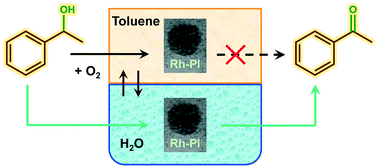
Catal. Sci. Technol., 2017,7, 3985-3998
https://doi.org/10.1039/C7CY01006K
Transient structural and catalytic behaviour of Pt-particles probed by operando spectroscopy during a realistic driving cycle
Pt catalysts investigated with operando XAS under rapid transient temperature automotive driving cycle conditions.
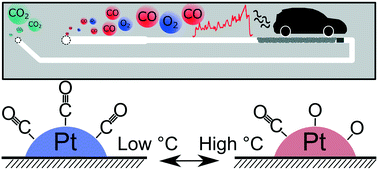
Catal. Sci. Technol., 2017,7, 3999-4006
https://doi.org/10.1039/C7CY00926G
Electrochemical study of the promoting effect of Fe on oxygen evolution at thin ‘NiFe–Bi’ films and the inhibiting effect of Al in borate electrolyte
Adding Fe3+ or Al3+ to the electrolyte resulted in fast promotion or poisoning, respectively, of catalysis for oxygen evolution at nickel–borate, and both effects were accompanied with anodic shifts in the redox peaks with potential scanning.
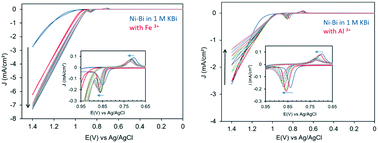
Catal. Sci. Technol., 2017,7, 3876-3891
https://doi.org/10.1039/C7CY00873B
Colloidal Cu/ZnO catalysts for the hydrogenation of carbon dioxide to methanol: investigating catalyst preparation and ligand effects
This paper reports on the influences of the catalyst preparation method and ligand effects for a series of highly active Cu/ZnO colloidal catalysts for the hydrogenation of CO2 to methanol.
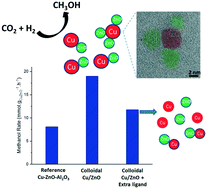
Catal. Sci. Technol., 2017,7, 3842-3850
https://doi.org/10.1039/C7CY01191A
Supported two- and three-dimensional vanadium oxide species on the surface of β-SiC
Dispersing two-dimensional VOx species on β-SiC offers a new approach to scale up propane ODH.
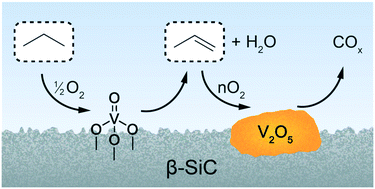
Catal. Sci. Technol., 2017,7, 3707-3714
https://doi.org/10.1039/C7CY01036B
Effect of hierarchical meso–macroporous structures on the catalytic performance of silica supported cobalt catalysts for Fischer–Tropsch synthesis
A series of meso–macroporous silica supports with the same macroporous diameter but different mesoporous diameters were prepared by introducing phase separation into a sol–gel process and used to prepare cobalt catalysts for Fischer–Tropsch synthesis.
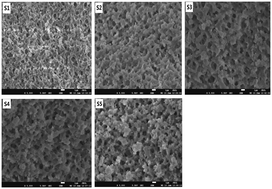
Catal. Sci. Technol., 2017,7, 3812-3822
https://doi.org/10.1039/C7CY01180F
Phosphine-pyridonate ligands containing octahedral ruthenium complexes: access to esters and formic acid
Selective formation of esters from primary alcohols or formic acid from carbon dioxide was achieved in the presence of phosphine-pyridone containing ruthenium catalysts.
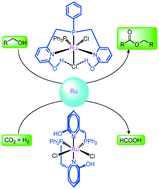
Catal. Sci. Technol., 2017,7, 3492-3498
https://doi.org/10.1039/C7CY00932A
Catalytic carbonyl hydrosilylations via a titanocene borohydride–PMHS reagent system
Catalytic amounts of titanocene(III) borohydride, generated under mild conditions from commercially available titanocene dichloride, in concert with a stoichiometric hydride source is shown to effectively reduce aldehydes and ketones to their respective alcohols in aprotic media.
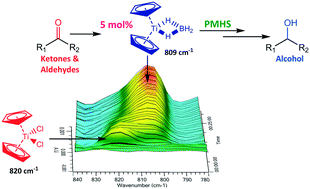
Catal. Sci. Technol., 2017,7, 3469-3473
https://doi.org/10.1039/C7CY01088E
Theoretical insights into the nature of synergistic enhancement in bimetallic CoTiAlPO-5 catalysts for ammonia activation
Bimetallic catalytic synergy, the concurrent action of two different metal ions in the same material, has resulted in improved efficiency in many catalytic systems and for a range of chemical processes.
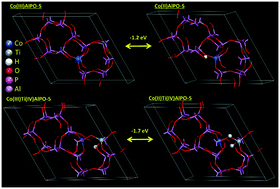
Catal. Sci. Technol., 2017,7, 3474-3480
https://doi.org/10.1039/C7CY00965H
Et3GeH versus Et3SiH: controlling reaction pathways in catalytic C–F bond activations at a nanoscopic aluminum chlorofluoride
Catalytic C–F activations at Lewis-acidic amorphous aluminum chlorofluoride (ACF) with Et3GeH and Et3SiH for reaction pathway control are presented.

Catal. Sci. Technol., 2017,7, 3348-3354
https://doi.org/10.1039/C7CY00845G
Simple synthesis of ultrasmall β-Mo2C and α-MoC1−x nanoparticles and new insights into their catalytic mechanisms for dry reforming of methane
Ultrasmall β- and α-molybdenum carbide particles were synthesized by a resin route and they showed different oxidation–recarburization cycles.
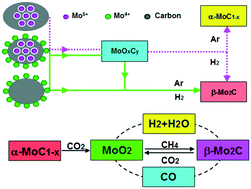
Catal. Sci. Technol., 2017,7, 3312-3324
https://doi.org/10.1039/C7CY00708F
Designing MoS2 nanocatalysts with increased exposure of active edge sites for anthracene hydrogenation reaction
Designing MoS2 nanocatalysts rich with active edge sites by engineering of the nanostructures is an effective strategy to enhance their catalytic activity.
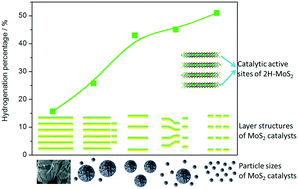
Catal. Sci. Technol., 2017,7, 2998-3007
https://doi.org/10.1039/C7CY01026E
First-principles study of structure sensitivity of chain growth and selectivity in Fischer–Tropsch synthesis using HCP cobalt catalysts
Co (0001) prefers the CO insertion mechanism with high methane selectivity, but Co (10![[1 with combining macron]](https://www.rsc.org/images/entities/char_0031_0304.gif) 1) prefers the carbide mechanism with high C2-hydrocarbon selectivity.
1) prefers the carbide mechanism with high C2-hydrocarbon selectivity.
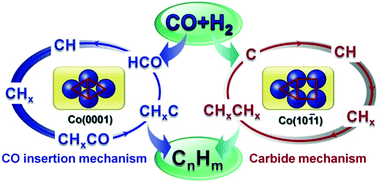
Catal. Sci. Technol., 2017,7, 2967-2977
https://doi.org/10.1039/C7CY00706J
Effect of zeolite confinement on the conversion of 1-butanol to butene isomers: mechanistic insights from DFT based microkinetic modelling
First principles microkinetic modelling shows that, unlike in H-ZSM-5 and H-ZSM-22, trans-2-butene formation in H-FER occurs via direct dehydration of 1-butanol.
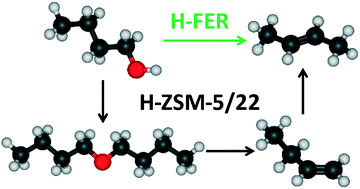
Catal. Sci. Technol., 2017,7, 2978-2997
https://doi.org/10.1039/C7CY00536A
Hydrogenative ring-rearrangement of biomass derived 5-(hydroxymethyl)furfural to 3-(hydroxymethyl)cyclopentanol using combination catalyst systems of Pt/SiO2 and lanthanoid oxides
Combination catalyst systems composed of Pt/SiO2 and lanthanoid oxides efficiently catalyze the hydrogenative ring-rearrangement of 5-(hydroxymethyl)furfural in water to produce 3-(hydroxymethyl)cyclopentanol which can be a unique chemical building block derived from biomass.
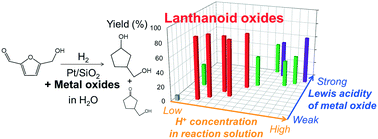
Catal. Sci. Technol., 2017,7, 2947-2953
https://doi.org/10.1039/C7CY00712D
Structure–reactivity relationship in isolated Zr sites present in Zr-zeolite and ZrO2 for the Meerwein–Ponndorf–Verley reaction
An adequate distribution of co-adsorbed reactants on the catalyst surface determines the activity of Zr-containing materials for the MPV reaction.
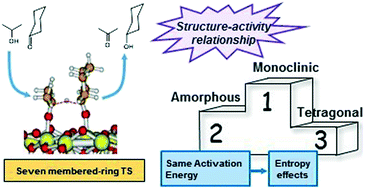
Catal. Sci. Technol., 2017,7, 2865-2873
https://doi.org/10.1039/C7CY00567A
Tryptophan lyase (NosL): mechanistic insights into amine dehydrogenation and carboxyl fragment migration by QM/MM calculations
QM/MM calculations suggest two feasible pathways for the breaking of the C–C bond of the substrate. The breaking of the Cα–Cβ bond leads to the final product, whereas the cleavage of the Cα–C bond will terminate in the EPR-trapped radical intermediate.
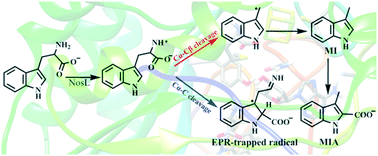
Catal. Sci. Technol., 2017,7, 2846-2856
https://doi.org/10.1039/C7CY00573C
Rational design of porous binary Pt-based nanodendrites as efficient catalysts for direct glucose fuel cells over a wide pH range
Porous binary PtPd, AuPt, PtCu, and PtNi nanodendrites prepared by a facile one-step reduction under ultrasonic irradiation at room temperature, exhibited a substantial catalytic activity towards glucose oxidation reaction at different pH values relative to a commercial Pt/C catalyst.
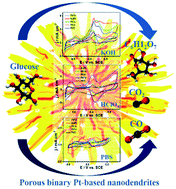
Catal. Sci. Technol., 2017,7, 2819-2827
https://doi.org/10.1039/C7CY00860K
Facile and benign conversion of sucrose to fructose using zeolites with balanced Brønsted and Lewis acidity
A simple and robust two-step process with zeolites as catalysts converts sucrose in high yield into the versatile monosaccharide fructose.
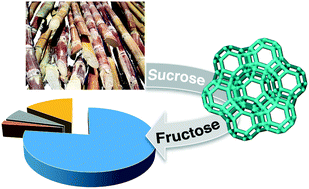
Catal. Sci. Technol., 2017,7, 2782-2788
https://doi.org/10.1039/C7CY00540G
Lead-free organic–inorganic hybrid perovskite heterojunction composites for photocatalytic applications
Heterojunction structured MASnI3/TiO2 photocatalysts (MA represents CH3NH3+) are prepared via a facile wet-chemical method and characterized by various techniques.
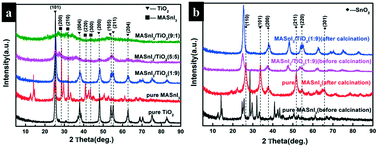
Catal. Sci. Technol., 2017,7, 2753-2762
https://doi.org/10.1039/C7CY00389G
Mechanistic insights into complete hydrogenation of 1,3-butadiene over Pt/SiO2: effect of Pt dispersion and kinetic analysis
Gas-phase hydrogenation of 1,3-butadiene was investigated over Pt/SiO2 catalysts with the aim of understanding the complete hydrogenation of dienes.
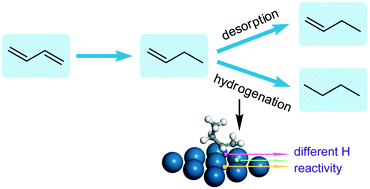
Catal. Sci. Technol., 2017,7, 2717-2728
https://doi.org/10.1039/C7CY00534B
New insights into catalyst deactivation and product distribution of zeolites in the methanol-to-hydrocarbons (MTH) reaction with methanol and dimethyl ether feeds
The ability of a zeolitic catalyst to dehydrate methanol to dimethyl ether affects catalyst deactivation and product distribution during the methanol-to-hydrocarbons (MTH) reaction.
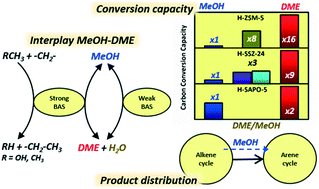
Catal. Sci. Technol., 2017,7, 2700-2716
https://doi.org/10.1039/C7CY00129K
Ni/Ln2Zr2O7 (Ln = La, Pr, Sm and Y) catalysts for methane steam reforming: the effects of A site replacement
The Ln2Zr2O7 phase varies from pyrochlore to defective fluorite with decreasing rA/rB, thus resulting in Ni/Ln2Zr2O7 catalysts with improved performance.
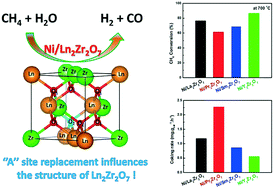
Catal. Sci. Technol., 2017,7, 2729-2743
https://doi.org/10.1039/C7CY00004A
Mass transfer and convection effects in small-scale catalytic hydrogenation
The reaction rate of rhodium-catalyzed hydrogenation of alkynes was shown to be strongly influenced by the transfer of the hydrogen gas into the solution and stirring in the solution.
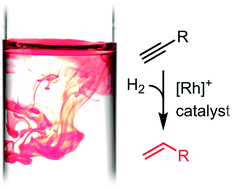
Catal. Sci. Technol., 2017,7, 2609-2615
https://doi.org/10.1039/C7CY00492C
An efficient Cu-catalyzed azide–alkyne cycloaddition (CuAAC) reaction in aqueous medium with a zwitterionic ligand, betaine
Betaine, a simple zwitterionic additive, dramatically accelerated the CuAAC reaction in excellent yields under 2.5–200 ppm levels of Cu(I) in water.

Catal. Sci. Technol., 2017,7, 2450-2456
https://doi.org/10.1039/C7CY00518K
About this collection
Welcome to our online rolling collection of the hottest work published in Catalysis Science & Technology. Here we feature all the 2017 Catalysis Science & Technology articles highlighted as HOT by the handling editor or our referees. Congratulations to all the authors whose articles are featured.